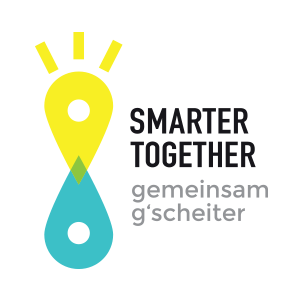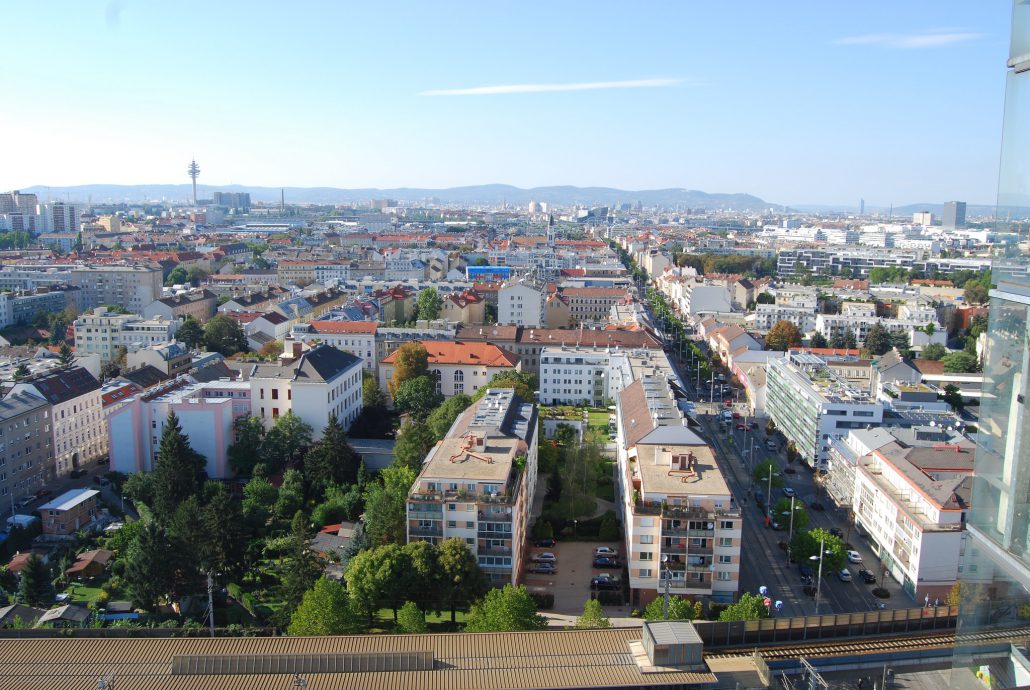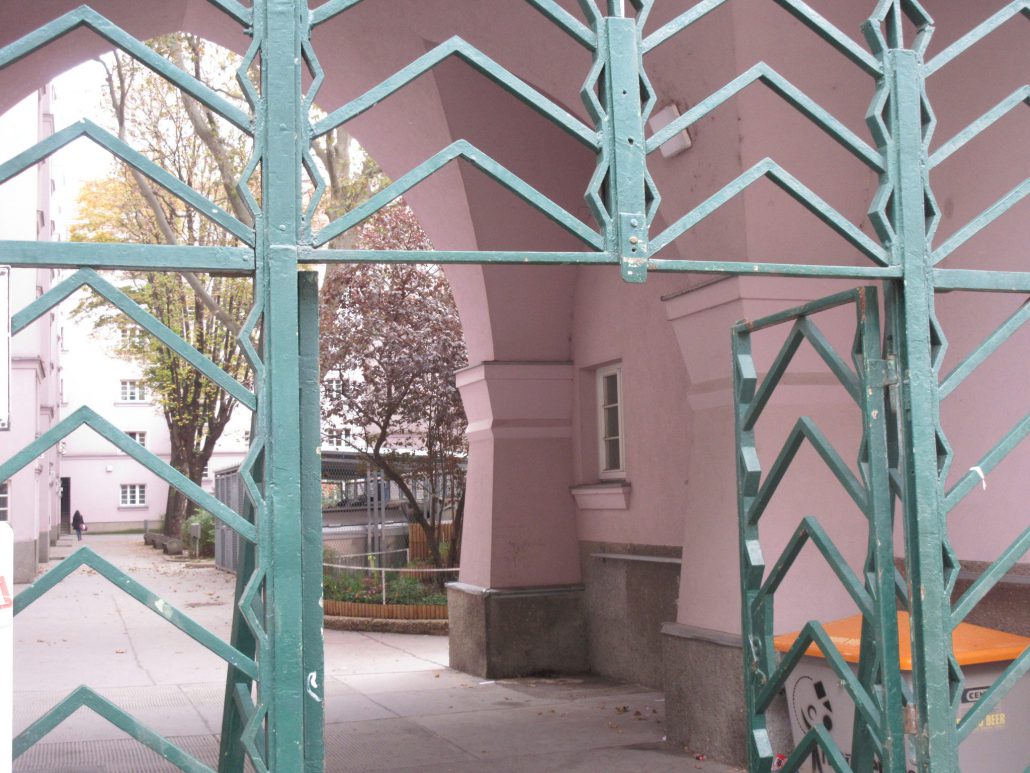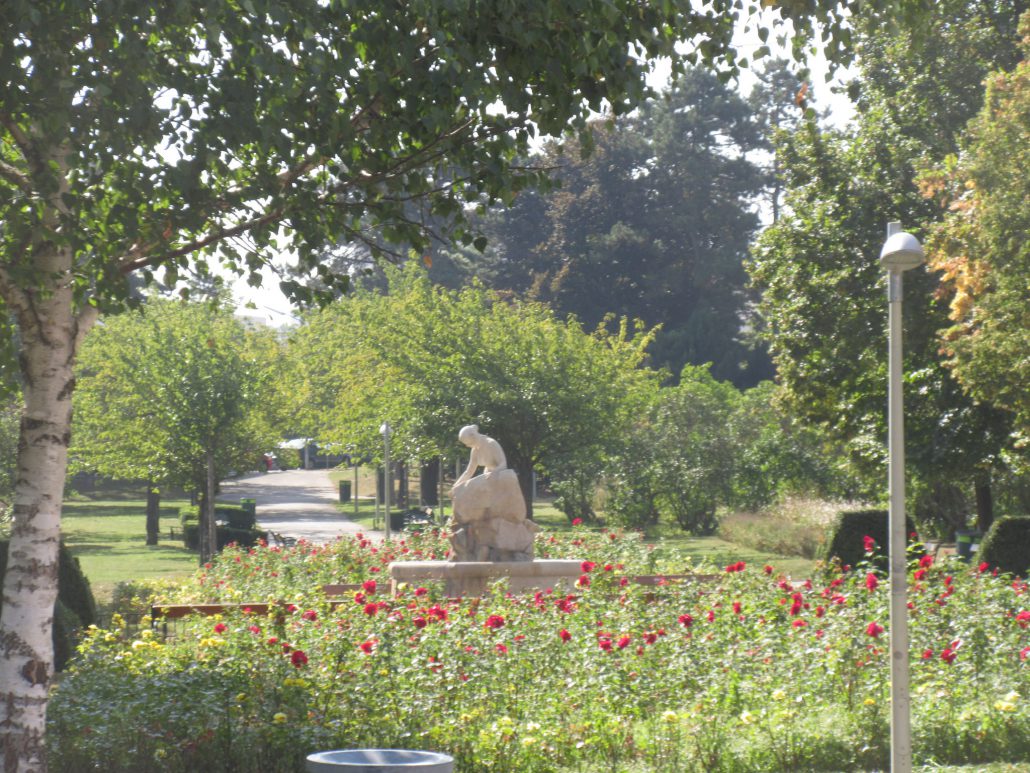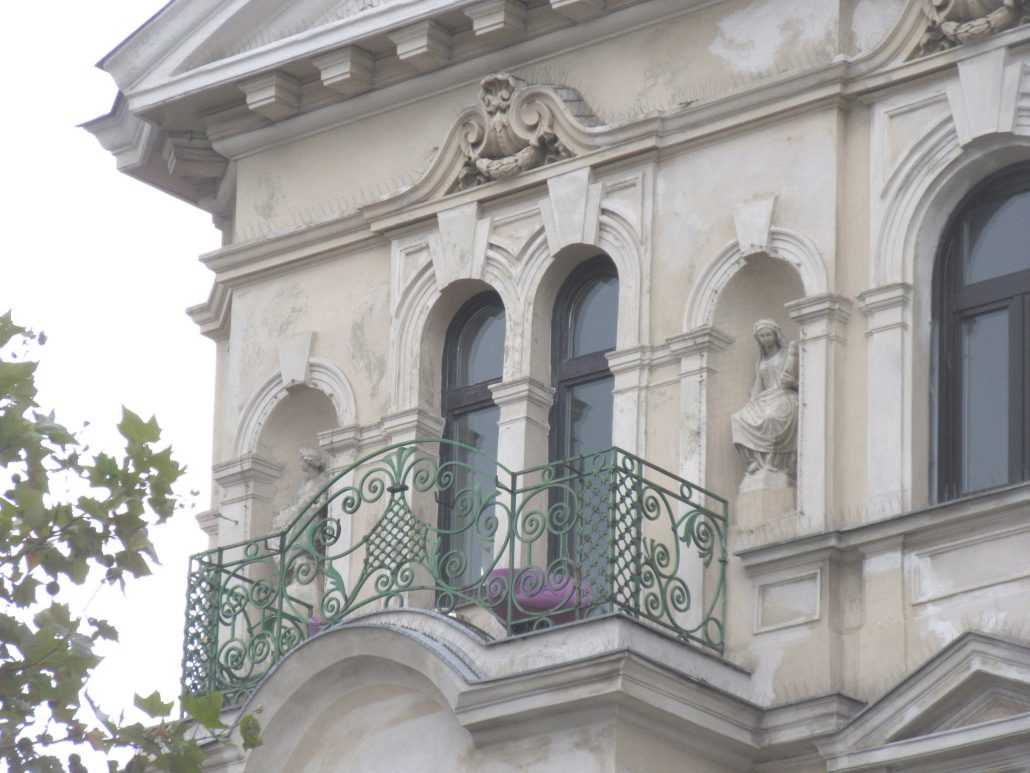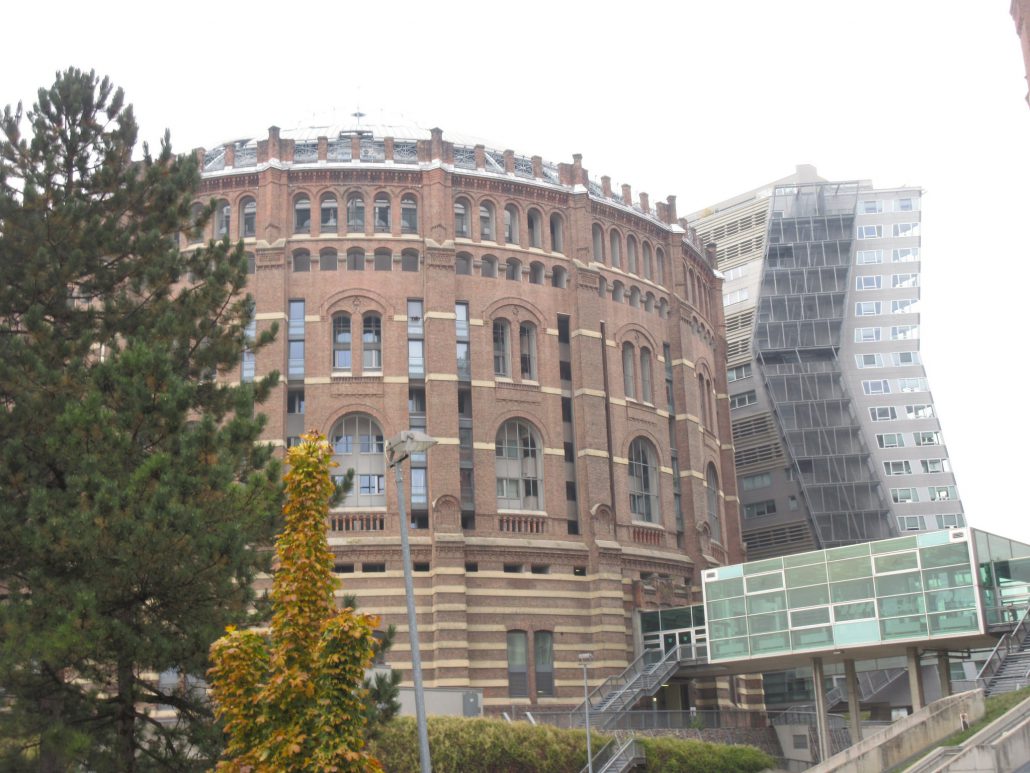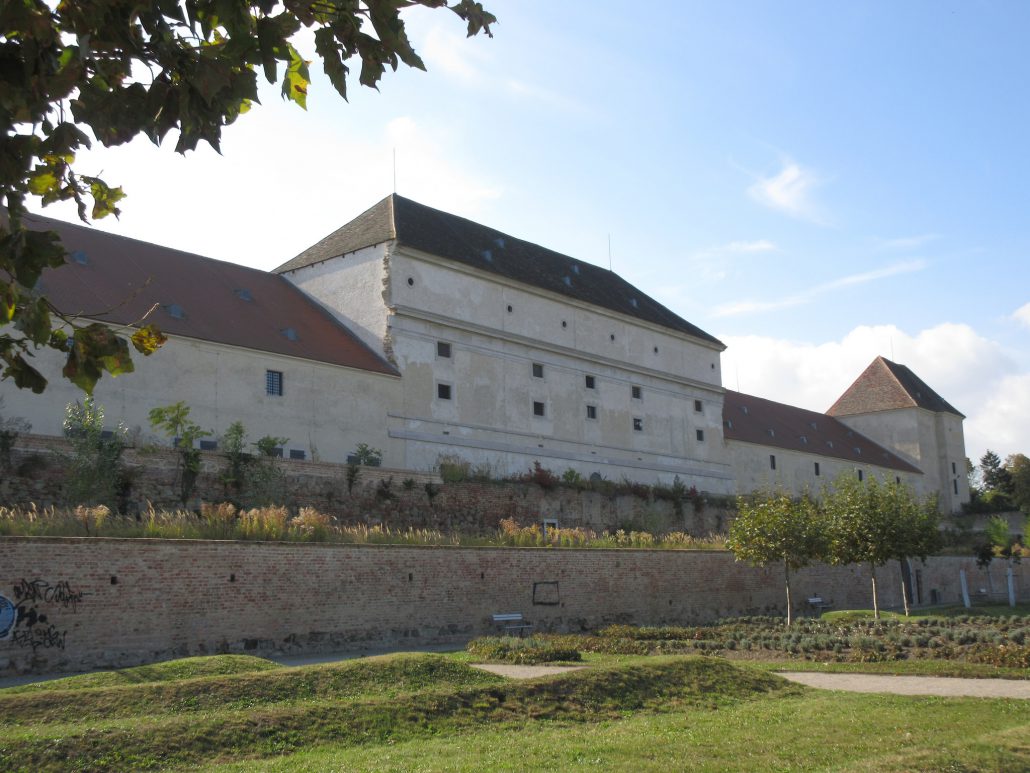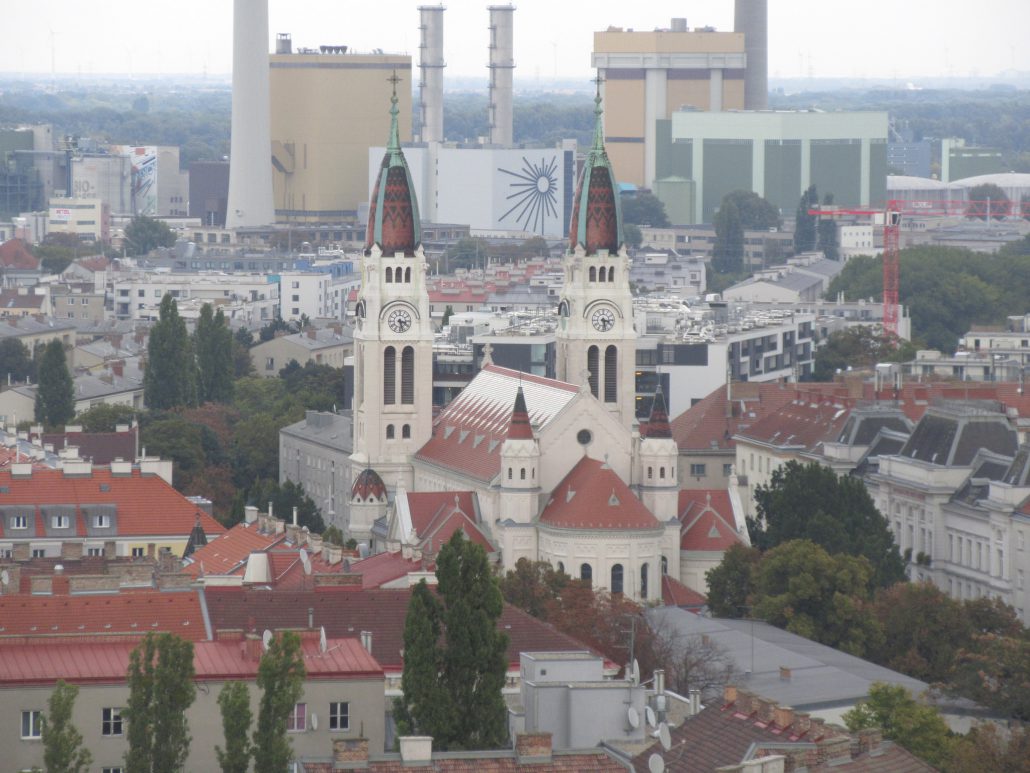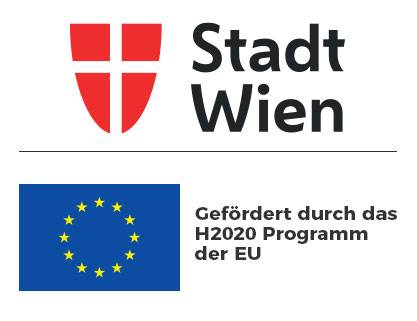Here is the New Smarter Together Virtual District Guide of Simmering!
Smarter Together District Guide of Simmering
Dear project partners, dear neighbors from Simmering, dear readers,
Smarter Together is a multidimensional European project, where numerous international project partners follow one and the same vision and aim at contributing – together with the citizens – to an eco-friendly, sustainable city of the future with a high quality of life.
Smarter Together is also strongly anchored on the local level. The present district guide and photo blog is an expresion of this tight bond with the local real life, whilst the projects aims at fostering positive local dynamics.
Munich and Lyon are partner cities, Santiago de Compostela, Sofia and Venice are follower cities, Kiiv/Kiev and Yokohama have observer status. Even Hong Kong is interested in Vienna and in the Smarter Together Experience. Numerous additional cities are connected to Vienna through additional city networks, enterprises and research institutions.
With Smarter Together, Simmering became a positive and often first concrete anchor in Vienna for many international project partners as well as the international smart city community.
As a special service to our international partners – as well as evidently for our neighbors in Simmering and in Vienna – we produced this rather subjective virtual district guide and photo blog. It shows how varied, attractive, interesting and dynamic Simmering is, while being a good place to be and to live in. The photo gallery invites each and every one to discover these and many other special places in Simmering. The pictures are mostly geolocated and tagged on the map.
The photo galleries are being updated continuously. Suggestions are always welcome.
Simmering, a District with its Specific Charms
Simmering is the 11th district in the South-Eastern part of the City of Vienna. Simmering is considered a classical blue collar and industrial district. The district has been established in 1892 through the merging of the municipalities of Simmering and Kaiserebersdorf; the third part is the area of Albern with its Danubeport and the „cemetery of those without a name“. Simmering lies on the historic main axis connecting Vienna to the East. The latter is known today as Simmeringer Hauptstraße, the main road of Simmering, which has kept its importance in the life of all inhabitants of Simmering and of all Vienna in general.
For a long time, Simmering was widely an agricultural area, producing the vegetables for the city. Many of the gardeners came from the East, nowadays knows as the Eastern Austrian land of Burgenland. Later came the industry and city enterprises needing lot of space. It was only in 1874 that the Vienna Central Cemetery was created, at that time still far outside the city. The once magnificent renaissance palace Neugebäude in the outskirts of Kaiserebersdorf came soon out of use and deteriorated with the construction of Schönbrunn, the imperial residence from the baroque times on.
View the picture gallery Impressions from Simmering / Simmeringer Impressionen.
Simmeringer Hauptstraße / Main Street of Simmering
Simmeringer Hauptstraße (main street of Simmering) is a major communication axis even since Roman times (medieval archaeological remains are exhibited in the U3 metro station Simmering, exit Kaiser-Ebersdorfer Straße). Emblematic housing from the 1920s and 1930s was built in its vicinity, such as the Strindberghof (U3 Zippererstraße) and pure art déco around Herderpark (U3 Enkplatz). Hasenleiten (U§ Simmering) is a widely green neighborhood. New, mostly modern and integrated social housing has been built in the Mautner Markhof area (U3 Enkplatz). Until now, the main street of Simmering is a major shopping street in the district.
View the picture gallery Simmeringer Hauptstraße / Main street of Simmering.
Gründerzeit / Belle Époque in Simmering
The project area of Smarter Together is geographically the nearest to the city of all quarters of Simmering. Therefore, its architecture comprises a wide range of housing buildings from the 1880-1905, the Belle époque or Gründerzeit in German. Some characteristic ensembles such as in the Felsgasse near Enkplatz are still maintained and representative for the period, equally as the neo-byzantine district church on Enkplatz itself.
View the picture gallery Gründerzeit / Belle Époque in Simmering.
Art Déco in Simmering
With the development of industry, also housing for the local workers became a major issue as the need for housing became indescribably virulent. It was during the period of so called “red Vienna” between 1925 and 1934 under socialist/social democratic rule that over 60.000 municipal flats were built systematically, the so-called municipal housing.
In line with the political philosophy, science describes them as “palaces for the workers” and as “counter-castles”, which were equipped with the entire necessary infrastructure such as libraries, kindergartens, parks, public laundries, medical centers etc. The best architects and artists of the time contributed to the magnificent urban development using the aesthetics of the time, the art déco, although evidently on different levels.
Amongst the most significant examples are the Strindberg-Hof with initially 599 flats and an extremely huge inner court yard (U3 Zippererstraße). The bronze reliefs in the Strindberg-Gasse made by Angela Stadtherr (* 2. April 1899 in Vienna; † 7. August 1983), a female Austrian artist, are a manifesto for gender equality by itself. The Dr.-Franz-Klein-Hof and the Wildholz-Hof (U3 Enkplatz) are both decorated with some fine plastic.
View the picture gallery Art Déco in Simmering.
Herderpark and other Parks in Simmering
The political vision of the city government was to provide a high quality public and living space also and especially in blue collar districts such as Simmering. A wide range of parks and park-like inner courtyards reflect this political aim and vision of a socially integrated city with high quality of life that is so characteristic for Vienna. The Herderpark even reflects former palace garden concepts and is embraced by municipal housing – “palaces of the workers” from the 1920ies and 1930ies. One of its social and architectonic highlights is the public summer bath exclusively for children. The inner courtyard of the Strindberg-Hof is also worth a visit. Numerous other parks – some very recent – contribute to the life quality in Simmering.
View the picture gallery Herderpark / Parks in Simmering.
Decorative Arts in / Around Buildings
The aim of the political leadership through the decades was to build not only mere housing with all the necessary social facilities – something very innovative and modern for this time. Another aim was to provide a living environment with a high level of everyday culture and awareness. This is inter alia translated in a number of mosaics and other pieces of art in public space, very often on the exterior walls of housing buildings from the 1950s and 1960s. At this time, the focus was on the mass production of housing as a response of urgent needs. There are a number of high quality examples of such wall art in Simmering that provide an identity to the housing of that time even all over Vienna.
On the external walls of the Strindberg housing unit there are two magnificent bronze reliefs from Angela Stadtherr (* 2. April 1899 in Vienna; † 7. August 1983), an Austrian sculptress specialized in metal art, which is a political statement in itself for the equality of right of women.
View the picture gallery Decorative Arts / Kunst am Bau in Simmering.
Gasometer Area
The area around the so called Gasometer changed tremendously in the last decade. The former stocks of city gas were built in 1896 and are now under heritage protection. Most interestingly, even though being industrial buildings, their architecture expresses a strong commitment to aesthetics.
Decades after coming out of use they underwent a transformation process between 1999 and 2001 and became a modern multifunctional center, comprising of housing, student residences, a cine-center, the city archive, an event-place and shops. Each of the four former gas-tanks was redesigned by the four architects Jean Nouvel, Coop Himmelb(l)au (Wolf D. Prix), Manfred Wehdorn and Wilhelm Holzbauer.
Also, the neighboring area went through a change process: from a no-man’s-land it became an attractive housing area up to the street named Lorenz-Reiter-Straße in the vicinity of the U3 station Zippererstraße and the housing complexes from the 1930s and 1950s. Nowadays, almost no construction plots are left and even fewer are archeological traces of former single floor houses workshops with gardens in the backyard.
View the picture gallery Gasometerviertel.
The Mautner Markhof Neighborhood and Other Modern Housing in Simmering
The neighborhood of Mautner Markhof has been recently built on the production site of a former famous food industry on the north side of the main road axis. This production site on the former edge of the traditional urban and already suburban district area dates back to the mid 1900. It comprises now a series of most varied social / city funded housing with different characteristics reflecting the very modern and up to date approaches in the urban development of new housing areas. It also reflects the four pillars of Vienna social housing: architecture, economy, ecology and social sustainability.
View the picture gallery Mautner Markhof-Gründe.
All in all, the housing architecture in Simmering developed tremendously since 1999/2000. Everything started with the refurbishment of the famous gas tanks, the Gasometer. This initiated the complete renewal of their vicinity up to the Lorenz-Reiter-Straße. Almost everyone will find appealing new housing here, for instance in the Hasenleiten neighborhood, on Simmeringer Spitz (both U3 Simmering) or elsewhere, including futuristic buildings like in Fickeysstraße or more cheerful and still very attractive structures in Lorystraße.
View the picture gallery New Housing in Simmering.
From the point of view of Smarter Together two other public buildings are smart city lighthouse projects of the City of Vienna:
- One project is the Educational center and community college „Bildungszentrum Simmering”, which was handed over to the public in 2011. It is equipped with the most advanced technology regarding energy efficiency (information folder in German here).
- The gyms of the local secondary school on Enkplatz will become zero-energy buildings upon the implementation of the refurbishment plan and will also use the most advanced smart technology and innovative energy systems (link to the report in German here).
More Smart City Areas in Vienna: Eurogate, Sonnwendviertel and Seestadt Aspern
Vienna is a lively developing city, with modern social / funded housing and urban development areas aiming at implementing smart city concept in new districts and quarters such as:
- Eurogate, Erdberg/Landstraße, 3rd District
- Sonnwendviertel, Favoriten, 10th District
- Seestadt Aspern, Donaustadt, 22nd District
View the picture gallery Smart City in Wien: Eurogate, Sonnwendtviertel, Seestadt Aspern.
A Glimpse at the Past: the Renaissance Palace Neugebäude and the Vienna Central Cemetery
The palace named Neugebäude in Kaiserebersdorf – called the “new building” in contrast to an even older palace in the vicinity – was initially a hunting palace of Emperor Maximilian II (1527-1576). It was ordered in 1569 and represented the most magnificent example of Mannerism North of the Alps. However, Empress Maria-Theresia, Arch-Duchess of Austria and Queen of Hungary and Bohemia decided to establish her summer residence in what is nowadays known as the magnificent summer palace of Schönbrunn.
On this occasion, parts of the Neugebäude palace were transferred to Schönbrunn. This refers especially to the double-pillars as well as to the so called bucrania (stone made skulls of oxes) that were reused as spolia (the repurposing of building stone for new construction) in the construction of the Gloriette, the main garden-folly in Schönbrunn high on the top of its gardens. Since then, the palace Neugebäude deteriorated slowly while being used for most profane needs. It was revitalized only recently. Now, it is an event location with an open air cinema in summerfor several happenings. On the North side a modern garden was installed, in place of the former renaissance garden.
View the picture gallery Schloss Neugebäude, Kaiserebersdorf.
The southern side of the former palace Neugebäude is now an urn burial place that had been integrated into the remaining structure of the former palace garden walls. The architect Clemens Holzmeister designed the crematorium built in 1922 as a fine example of expressionistic art déco with oriental influences. The area used to be the former Southern palace garden (the upper tree garden); parts of the walls with their characteristic dove tail pinnacles, ten towers and the building of the former water works are being integrated and adapted at that moment (Wiki).
The Central Cemetery of Vienna, which was inaugurated in 1874, is located South of the crematorium respectively South of the main street of Simmering (Simmeringer Hauptstraße) in this area. Its main church is dedicated to Saint Charles Borromeo and was designed by Max Hegele between 1908 and 1911. It represents an exquisite example of Art Nouveau respectively its Viennese variant of (late) Jugendstil. The Central Cemetery hosts a series of cenotaphs and memorials of most different religious communities such as the Copts. A place worth visiting is the Old Jewish Cemetery.
View the picture gallery Vienna Central Cemetery / Zentralfriedhof und Altsimmeringer Friedhof.
Hasenleiten: From a Traditional Blue Collar Neighborhood to the futuristic Housing in Fickeysstraße
Hasenleiten is the name of the area East of the U3 Station Simmering and South of the main street Simmeringer Hauptstraße. It is most known for the huge housing unit comprising 1219 municipal – social flats in a widely green area which construction had started in between the two wars in order to satisfy the urgent housing needs while providing high quality to its inhabitants. It has its specific social history and identity and was beloved home of the famous Austrian football/soccer player Herbert Prohaska. It is also known for its multicultural flee market every Sunday at the local football club on SV Ostbahn 11 Platz. In this area one could also find most modern housing architecture such as the almost futuristic building in Fickeysstraße or more moderate and still cheerful in Lorystraße.
View the picture gallery Hasenleiten.
From Another Time: 1994
Events and Happenings in Simmering
There are regular events in Simmering, such as the main happening on the main road, the Simmeringer Hauptstraße, respectively the so called Simmeringer Straßenfest as well as the numerous events in the former palace Neugebäude. Smarter Together participated for the first time in October 2016 in the so called Simmeringer Straßenfest and was stationed with its Urban Living Lab SIMmobil on Enkplatz.
View the picture gallery Popular Events / Volksfeste in Simmering.
Mobility in Simmering
Simmering and more specifically the Smarter Together project area lie on a most ancient axis, even from Roman times, the Simmeringer Hauptstraße, the mains street of Simmering, connecting Vienna with the East even with Bratislava and Budapest, both capitals of neighboring countries. The main street connects nowadays not only the city centre with the South-Eastern city Areas or more recently the Airport but also with the Eastern Country side in general. Medieval remains are visible in a vitrine in the U3 station Simmering (external exit Kaiser-Ebersdorfer-Straße).
Nowadays, the metro U3 connects Simmering to the city centre in a 15 minutes drive. A range of suburban and regional trains (Schnellbahn / S-Bahn) embrace the area with several stations connecting Simmering even directly to Bratislava. Regional busses interlink Vienna with the region. International busses stop at the nearby U3 stop Erdberg. Trams, such as the legendary tram No 71, as well as city busses are standard mobility infrastructure equipment.
The huge factory of Siemens Leberstraße is the biggest industrial sites for mobility in the Smarter Together project area and its project partner.
View the picture gallery Mobility / Mobilität in Simmering.
The Pictures on the Map
The pictures from the thematic galleries above are georeferenced on a virtual map, which is available here.
Bojan Schnabl
